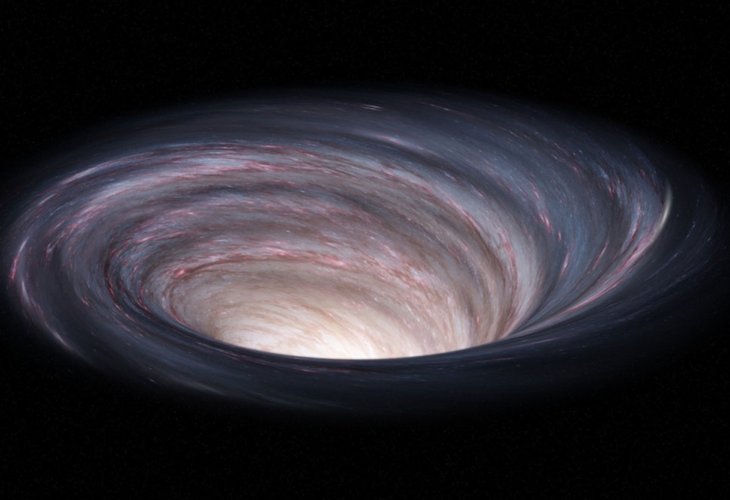The Mystery of Black Holes: Ancient Wisdom or Modern Science?
Could it be that the existence of black holes is explicitly mentioned in Jewish texts for thousands of years?
 (Photo: shutterstock)
(Photo: shutterstock)A "black hole" is a star with such a powerful gravitational field that even light cannot escape it, rendering the star invisible: a dark star. The scientific hypothesis of black holes emerged only in the 18th century and was initially controversial. Observable evidence of black holes only surfaced in the 20th century. Might the existence of black holes have been clearly described in ancient Jewish sources for millennia?
Consider this passage from Psalms, about 2900 years old:
Psalms Chapter 148
1 Praise Hashem:
Praise Hashem from the heavens; praise Him in the heights above.
2 Praise Him, all His angels; praise Him, all His heavenly hosts.
3 Praise Him, sun and moon; praise Him, all you shining stars.
4 Praise Him, you highest heavens and you waters above the skies.
5 Let them praise the name of Hashem, for He commanded and they were created.
6 And He established them forever and ever; He issued a decree that will never pass away.
7 Praise Hashem from the earth, you great sea creatures and all ocean depths,
8 lightning and hail, snow and clouds, stormy winds that do his bidding,
9 you mountains and all hills, fruit trees and all cedars,
10 wild animals and all cattle, small creatures and flying birds,
11 kings of the earth and all nations, you princes and all rulers on earth,
12 young men and women, old men and children.
13 Let them praise the name of Hashem, for His name alone is exalted;
His splendor is above the earth and the heavens.
14 And He has raised up for His people a horn, the praise of all His faithful servants,
of Israel, the people close to him.
Praise Hashem.
Notice how the psalm lists different entities in the universe and on earth that praise Hashem: "His angels," "sun," "moon," "fire," "hail," and many more. It is intriguing that when mentioning stars, the psalm uses the phrase "shining stars" (Psalms 148:3).
In Judaism, every word in the sacred texts (Torah, Prophets, Writings) is considered purposeful, as they were written by divine inspiration. The use of "shining stars" instead of just "stars" implies that the word "shining" is intentional. The Talmud, dating back 2000 years, examines this verse and concludes:
Stars... that do not shine
(Pesachim 2a)
The Talmud derives from this verse that there are stars that do not emit light (!) The existence of non-illuminating stars is so clear and indisputable to the Talmud that it questions why the psalm says shining stars praise Hashem, while non-shining stars do not. Here is the discussion:
"Do shining stars need to praise Hashem, and non-shining stars do not?"
Translation: "Shining stars must praise Hashem, and non-shining stars do not?!"
(Pesachim 2a)
Furthermore, ancient sources state:
"There are stars that do not shine"
(Mahars"ha Chiddushei Aggadot on Pesachim, page 2a)
"Shining stars... and non-shining stars... are all part of His heavenly hosts"
(Mahars"ha, ibid.)
The sources explicitly mention that there are stars in the heavens that do not shine—dark stars, long before they were discovered by science.
Amazing!
Important Note:
In Judaism, understanding biblical verses involves four main layers: Peshat (literal), Remez (hint), Derash (interpretation), and Sod (secret). Furthermore, it is said "there are 70 faces to the Torah," meaning different interpretations can emerge from the same verse. The verse above, at the literal level, does not address dark stars. Instead, the additional word "shining" teaches that even star light is considered light, relevant to Jewish law: For example, if someone vows to abstain from enjoyment from any light, would that include star light as well? From this verse, the Talmud learns that this person would indeed not be allowed to enjoy star light, as it is also considered "light."
But as we have seen, at a deeper level, this verse informs us of the existence of "dark stars"—black holes, as they were later discovered by humanity.
The text is from the book "Worlds Intertwined." To download and read the chapter in PDF format, click here.
The author holds a B.Sc. degree in Physics with honors from the Technion.

